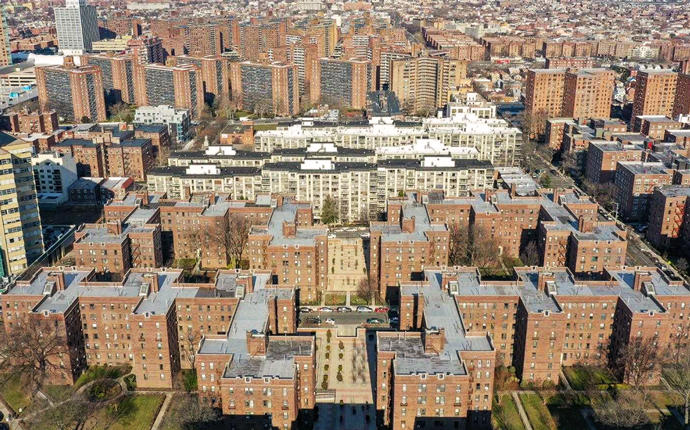Trending
Big sale sparks debate about how far multifamily market has plunged
Sources say an alternative offer was on the table in late 2018 for $190 million

Last week’s sale of a huge rent-stabilized portfolio at a steep discount has real estate insiders buzzing about how much multifamily property values have dropped since drastic changes to New York’s rent law in June.
The 539-unit Kestenbaum family portfolio in Rego Park was unloaded for $129.5 million, or 38 percent less than its original listed price — and $60 million short of what sources said was offered a year ago.
“The Rego Park Queens market one or two years ago comfortably traded at 16 to 17 GRMs,” said Daniel Parker, managing director at commercial brokerage Hodges Ward Elliott, referring to the gross rent multiplier, a function of the price and annual rental income. “This deal represents a 12 to 13 GRM, and is absolute evidence of the value diminution experienced because of the rent-stabilization laws.”
But not every professional in the multifamily sector agrees that the new value of rent-regulated properties should be judged by the Kestenbaum deal. Rather than a sign that the market has plunged, the discount may be an example of aggressive pricing and an initial refusal to believe the real estate lobby could lose its grip on Albany.
According to multiple sources, an offer of $190 million in late 2018 was turned down by the seller, who sought $210 million early this year.

Tim King
“Was it an aggressive price? Maybe,” said Tim King, managing partner of CPEX Real Estate.
“I can’t point to this one sale and say it’s proof the world is ending,” said King. “The reality is, the sale is almost a healthy indication. I don’t see [$129.5 million] as a bad number. Overall it’s reasonable and in line.”
But a developer of affordable housing pointed out that even if a portfolio was mispriced, the size of the discount indicates more than just an ambitious asking price.
“I think the rent-stabilized multifamily market is absolutely terrible and still going down. We are far from the bottom, and even things that were priced wrong were not priced 38% wrong,” the person said. “I still think they paid way too much for it.”
For investors with ample capital to deploy, rent-stabilized housing remains a stable investment in this new pricing paradigm, observers say, although the time horizon for investor returns has lengthened significantly.

Victor Sozio
“Investors are looking at 10 years out. For the bigger multifamily deals, it’s 10-year debt that’s being put on it,” said Victor Sozio, executive vice president at Ariel Property Advisors. “Investors want that runway, but they’re not expecting to get out in three to five years like the purchasers in 2015, 2016, even 2017 did.”
The changes to the rent law severely curtailed reimbursements for renovations, eliminated rent increases for vacancies and banned the most commonly used methods to remove units from rent regulation. The law was also made permanent, unlike its predecessors, which expired every few years.
Some landlords figure to turn to other strategies to generate returns on rent-regulated properties. The 568,276-square-foot Kestenbaum portfolio also boasts buildable space of 238,262 square feet. It is also in an Opportunity Zone, allowing investors to reduce or erase capital gains taxes.
“There’s additional FAR that someone could build in the future,” King said, referring to floor-area ratio. “That gives a little upside to someone.”




